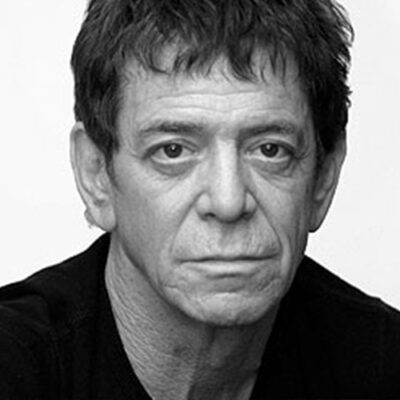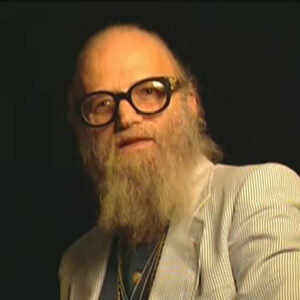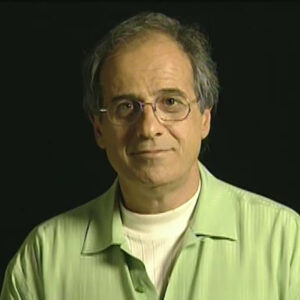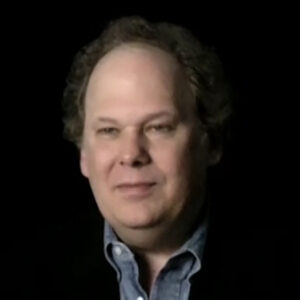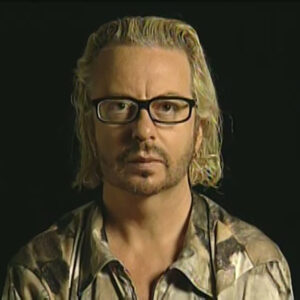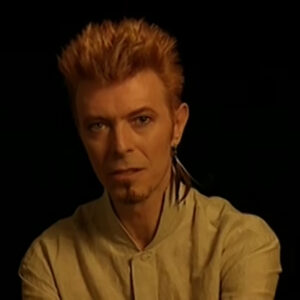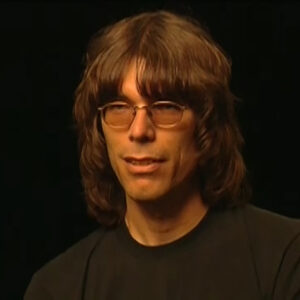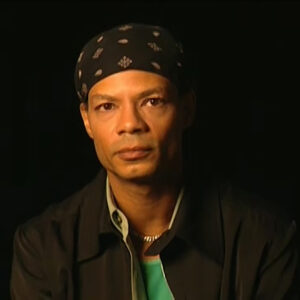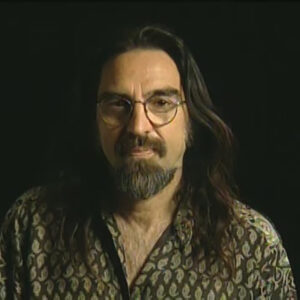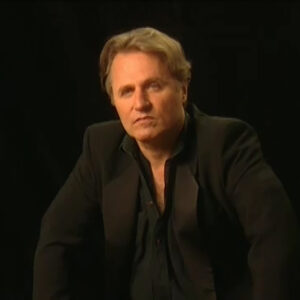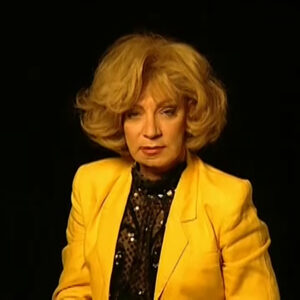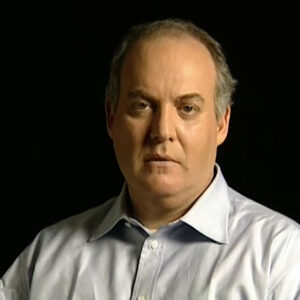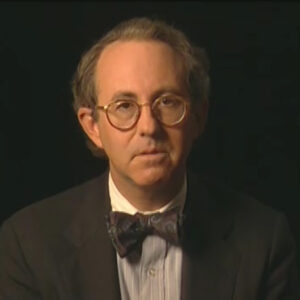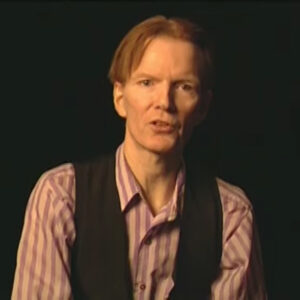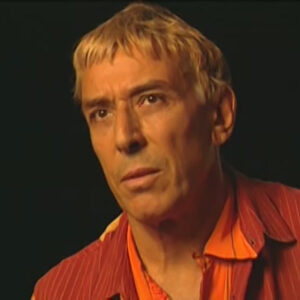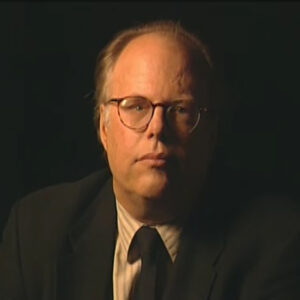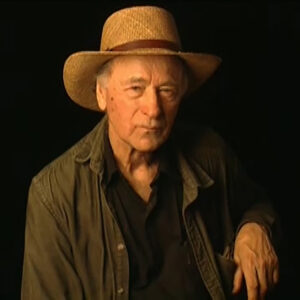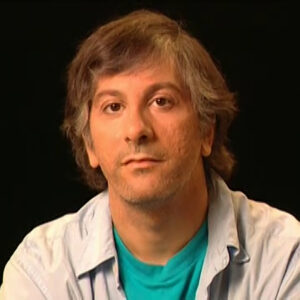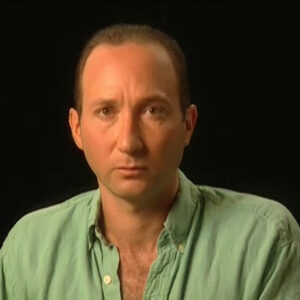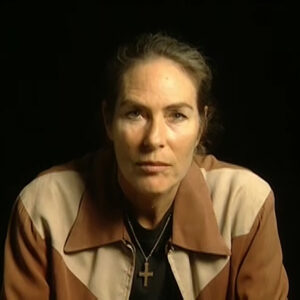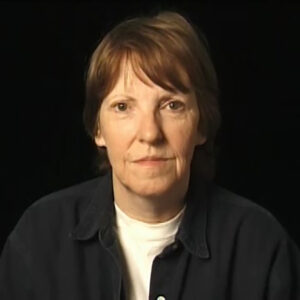Speaker I think Warhol is certainly one of most important and influential American artists of the 20th century, and part of his importance in a certain sense goes beyond any particular painting, any particular sculpture. It was a time in the 60s when you had many powerful artists, Oldenburg, Lichtenstein, et cetera. But Warhols, entire lifestyle, the whole range of things that he did set a new kind of definition of what it meant to be an artist. And that’s had an enormous influence on younger people’s sense because Warhol, like Lichtenstein and the others, stopped looking inside himself and started looking out at American culture. But he looked with a particularly kind of leveling eye that brought soup cans down with movie stars, down with atom bombs. There was a kind of coal leveling eye about the Rubert of information that flowed through American society in the 60s. That world had an ear and an eye for like no one else. And the whole construction of his persona as a kind of affect less witness to the 60s produced an imagery of the artist, which was so different from the angst ridden, alienated individual of the 50s and so much of its time that it redefined what it meant to be an artist. And I think that Warhols persona, as well as his work, had a big influence, his willingness to deal with the forces of commercial society, not to avoid them, not to feel that art had to be separate from the society it belonged in, but that it had to bathe in the juices of that society and deal with all of its contradictions and all of its forces. And Morell’s art is full of contradictions. It’s on the one hand full of glamour and glitz and dayglo and neon and aluminum foil. And on the other hand, it’s full of tragedy and black ink. It’s a Goya ESC view of the world. In many senses, it’s about disasters and race riots and suicides as much as it’s about gleaming wallpaper and discos and silvery light of electronic music. It’s all of the imagery of America in the 60s that we have now. When we think of the Kennedy assassinations, when we think of the race riots, so much of it is filtered through Warhols vision. If that alone were his legacy, he would be an enormously important artist. But to have constructed a new way to be an artist in the contemporary world, this was perhaps more important than any single work.
Speaker Wow.
Speaker I know he’d be pretty good. I was fabulous, Kurt. That was absolutely fabulous. OK. Can you say it?
Speaker Can you do that again? And just do you have four points there? Maybe do little to sentence things that a couple of points you want anyway you want. Is important. I love what you said about how he became a new artist, sort of.
Speaker After the image of the artist in the 50s as an alienated, angst ridden, inward turning individual, Warhol personified the idea of an artist dealing with the forces of society involved with its commercial aspects. Living a different kind of life as an artist. So on the one hand, you have the body of imagery that he left us, which is a quintessential memory of the 60s, from Marilyn Monroe’s death to the race riots in Birmingham to the Kennedy assassinations, to the whole sense of electric tragedy that per minute that decade. On the one hand, you have that as a body of work. On the other hand, you have the image of Warhol as an artist and how it was to be an artist in the world. And both of those things have had a tremendous impact.
Speaker Beautiful, fabulous.
Speaker Let’s talk about the scene around the world.
Speaker Talk about the factory, and then I can give you these names if you want to. Maybe just make a sentence or two about what the factory was.
Speaker The very fact that Warhol called his studio a factory is so interesting. It speaks to an artist who’s not an isolated individual in a kind of romantic loneliness. It’s a group enterprise. He was constantly an artist that was at home with society, with having a group of people around. His art was built on a synergy of talents. He fed off having musicians, poets, writers, filmmakers. He wanted to explore all of this together. And the idea of the factory as a group enterprise producing work and a kind of assembly line chain was a completely different anti romantic notion of what the artist ought to be. And it made this place, the factory, the place to be in New York in the 60s.
Speaker How is that different from, say, the artists of hundreds of years ago who had assistants who were helping them paid paintings? Is there a difference or is there a connection?
Speaker Of course, in artists like Rubins also had, in a sense, a factory because he had a lot of students working with him to produce a given in. But the thing is, I think that for Warhol, like for many artists, the 60s, the process was in some sense as important as the product. And when he got all those people together, he didn’t know necessarily what it was they were working to produce. It was the collectivity that was going to yield something new.
Speaker Beautiful. Beautiful. You’re five.
Speaker But there’s no one really. That we’re never going to cut to me.
Speaker So keep it tighter, but just don’t crap into it ahead. Yeah, a little tighter. That’s great. And you can come in time when you want. It looks great.
Speaker OK, so maybe if you could talk about some of who those artists are, you want to read the list, maybe just give me a list of four to give you just a Lou Reed. John Cale.
Speaker Yeah. Just say, like, you know, around the studio where the Velvet Underground and then you can name the names and then you can stop into the next one if you want. Or do it. You can memorize.
Speaker Should I admit to the camera that I got a list here or should we now just try and do it without it?
Speaker We’ll probably just hear you saying it. But just in case we don’t.
Speaker I’m sorry, but you said he was the factory was filled with people, filmmakers like.
Speaker You can do it in pieces if you want to.
Speaker Give me 10 minutes. I probably memorized this list, but I would just do do a few names and.
Speaker Gladstone. If you want to.
Speaker Well, is it, yeah.
Speaker If you showed up to the studio, you’d seen amazingly diverse cast of characters.
Speaker It was started over its head.
Speaker So the factory, if you if you showed up at Warhols factory, you’d see an amazingly diverse cast of characters. First of all, we had people like Ronnie Catrine or Jeremy Langa who were actually artists assistants to working there to work on the art with him. Or then you would have photographers like Steven Shaw or Billy Name were sort of hired by the factory to work.
Speaker But then at the same time, they’d be a whole big film making enterprise going on so that you might have the one time you’d have a set start that over.
Speaker Yeah.
Speaker I decided that he was maybe surrounded by filmmakers like that would drop into the factory or something.
Speaker In addition to his assistance, the world likes to surround himself with cast of characters like filmmakers, for example, who might drop into the factory like Jonas Make us or Jack Smith or Paul Morrissey would be around any moment when you dropped in. And then, of course, you had a cast of superstars who would come by the factory. You might have Hollywood, Woodlawn or Joe D’Allesandro at any given moment or.
Speaker All right, Mary, want to offset what’s marijuana? Yeah. I don’t know her. Yeah, it’s just list. You can just read those names. OK.
Speaker You know, what would be great is that you could find another visual. And I had read this list and you could do my voice overs.
Speaker Like to could. Yeah. And so I just read this it. Yeah. Yeah. Well did you just read it. We’ll do it that way. So.
Speaker So at any given moment you might find filmmakers surrounding Warhol like Jonas Mika’s or Barber Rubin or Jack Smith or Paul Morrissey to start that over again.
Speaker And don’t say Paul Morris because he was a factory member. I know Paul Marks, who is sort of the filmmaker for Warhol. So let me do this whole thing. Assuming you’re not going to use your exact visuals, I’ll read off the list. Exactly. Anyway, you want this would be much easier. OK.
Speaker And any given time when you visited Warhols factory, you would find the cast of characters that were hired to work for them as assistants. People like Ronnie Control and or Gerald Langa or photographers like Steven Shaw, Billy Name or Paul Morrissey is a filmmaker. But then also at any given day, there would be a lot of other people standing around working with Warhol, filmmakers like Jonas Mika’s or Barbara Rubin or Jack Smith, and an entire cast of superstars Holly Woodlawn or Joe D’Allesandro or Mary Warren off or Sedgwick Ultra Violet VVA. This enormous rich cast of characters Patti Darvin, Ville, Talley, Brown and so on and so forth. It was an incredibly rich cross-section of creative talent. It included musicians Lou Reed, John Cale, Maureen Tucker Stirling, Mark Sterling Morrison.
Speaker These people formed the great synergy that made the factory what it was beautiful and did the last part again just said that the Velvet Underground perform, rehearse there and the members of that. How do we want to say that? It’s in the Velvet Underground. When Warhol discovered the Velvet Underground, brought them to the factory and they rehearse there. So you so around that factory, where are these people? You know, Reid House band. House band. Yeah.
Speaker And of course, the factory was associated with music as well. And since it had a kind of house band and that was the Velvet Underground, which was Warhol’s discovery, so that at any given moment you’d have people like Lou Reed or John Cale or Maureen Tucker or Sterling Morrison involved with the Velvet Underground and its work at the factory.
Speaker OK, and then maybe we should just jump to your description of Williams and talk about that and just say, you know, I was your age and then the date and where you were and stuff.
Speaker Well, I have a real personal reminiscence, the Velvet Underground from a very unlikely place. I was an undergraduate at Williams College and my senior year was 19 six sixty seven.
Speaker And at Winter Carnival, at Williams College, someone and I can’t imagine who had the amazing taste to hire the Velvet Underground to come up to play. And I’m sure they thought we were as strange as we thought they were strange. And it’s an absolutely indelible memory to think of the student union at Williams College buried in snow in February of 1967 with the Velvet Underground playing away. It was a glimpse into a new world.
Speaker And can you talk about the concert at all? Do you remember anything about it? Was the EPA there drunk?
Speaker Say that I said I’d like to give you some details of the concert, but I think I was a little too gone on alcohol, probably, which was my drug of choice at the moment to construct to clear an image of it. It was loud and it was energizing.
Speaker Fabulous. That’s fabulous. Let me have this back feel. I can see my dad. That’s. That’s the.
Speaker Any thoughts on Robert Wilson just sort of put him in a context like we did Warhol and who he is?
Speaker Wilson Robert Wilson has been an enormously influential, particularly stage designer, but as an artist who, like many artists today, cuts across boundaries, this furniture, their sculptural installations and his collaborations with musicians like Philip Glass on big operatic projects, he’s again to find a new place to be an artist all over the world through several different media. He’s a person that has a big following in Europe, all over America. He’s like a cult figure in some ways.
Speaker And also do that again, maybe mentioning David Byrne worked with him.
Speaker Who else worked with him? So I’d just say Philip Glass and David Byrne and Tom Waits that he’s worked with.
Speaker He’s worked with them. He always picks sort of interesting musical, Twyla Tharp.
Speaker One of the most interesting aspects, I think, of Wilson’s career is the choice of collaborators. He’s worked with Philip Glass. He’s worked with David Byrne. Tom Waits. He’s worked with Twyla Tharp. He loves to collaborate with very strong talents. And the results are extraordinary.
Speaker That’s great. Did we talk about the superstar? I wanted to talk about the API.
Speaker Do you have much to say about that? Don’t have no idea since then. We don’t need it from you.
Speaker I think. Maybe just another few things about what the know.
Speaker This sort of factory that Warhol created and the atmosphere, if you can reconstruct it from your own research.
Speaker I mean, what was it like named lots of names that you can think of sort of maybe like Dollywood come. Salvador Dali. Bob Dylan. Who else would come by? Sort of all kinds of people from very different ranges, society people. It was. And how different that is from any other artist.
Speaker There was no one, no. There was just so unusual, this kind of thing.
Speaker I said that one of the most striking things about Warhol was his invention of a way of being an artist. And the factory was essential to that because it wasn’t just a place to paint pictures, wasn’t a place that was focused on a goal. It was a kind of testing lab for a new world. And everyone in town understood that this was a kind of cooking that in which something was happening and one was uncertain what it was and you had to be there to experience. So if you were Salvador Dali, you wanted to go. If you were Bob Dylan, you wanted to be there. You felt that by being in that environment, you could hear the future coming. And a lot of people had to be there to experience it because it was about open mindedness. It was about experiment.
Speaker Beautiful. Beautiful. That’s great. He almost gets his lunch now and this day. I don’t want to lose you here. So I’m trying to think of anything else that you could. Anything else that you can think of. Yeah.
Speaker Do you want to talk about any of the other artists that pop and maybe put Warhol in that context again? Who else was out there?
Speaker Rauschenberg or whatever? John sort of set the stage there.
Speaker I think the generation that Warhol belonged to is generally thought of in terms of pop art specifically. There’s also minimal and hard age art. But there was a whole group of people centering on use of commercial imagery, too, which Warhol belonged. And they all fed off the initial permissions given by Jasper Johns and Robert Rauschenberg in the late 50s, when Johnson Rauschenberg began working with familiar symbols like the flag or with photographic imagery drawn from media and began to use mechanical means like silkscreened, for example, chewing off Warhol and the pop artists.
Speaker Liechtenstein’s engagement with comic books, Oldenburg sculptures, which dealt with common objects like light switches or toilet bowls. All of this sense of grasping the grit and meat of everyday life and also life as mediated through the printing press, the television, the film vocabulary and I think waterholes particular experience had to do with the idea of mediated experience through the glamour machine of film Hollywood. He had an incredible kind of eye for the underlying sense of blackness or tragedy that lay behind the golden glitz of American society. You think of Liechtenstein’s work. It has a beautiful purity, cool irony to it. On the other hand, Oldenburg’s has a great, gregarious, kind of bumptious vitality. It’s organic and dripping among the pop artists Warhol and a combination of a cool leveling gaze and a deep, bitter sense of the tragedies of American life, which was very unique, particularly wonderful.
Speaker I wanted you to I just had that, like you mentioned earlier. But talk about how Warhol.
Speaker It is like two sentences, how he had filmmakers, musicians, superstars, society, kind of give us that dime that that that star of points of the different things that he had. So I guess it’s it’s it’s the superstars. It’s the musicians. It’s the filmmakers. It just lists all those things that were around him.
Speaker But if you think of Warhol as a persona, in some ways you’d think of the passive center of the middle of a storm, his persona. And the studio, the factory itself was a kind of crossing point where different currents of energy could come together. Everyone from society, people who wanted their portraits painted to street people and then musicians and film makers and poets and writers and artists, all of these currents, which tend to be running down separate alleys before crossed through Warhols gaze and through his factory flawless.
Speaker That was great. That was great.
Speaker Do you want to Do you know much about the screen tests that he did? You know, five hundred those stats seen some of. Yeah. Do you know enough you know, and you can say about those that a lot of people maybe just say people came. Well, that and that this was a reference to sort of Hollywood.
Speaker One of the things about Warhol is this funny kind of blank passivity that he wills with the machinery of glamour and high energy. And you see that in the screen test. So on the one hand, here’s a device taken from the glamour industry, from the big screen. But the way he does it in a kind of grainy blankness is almost like August Saunders’ photographs of his society. It’s a kind of dad on affectless cool exposure to what people were and what they wanted to do, Warhols ability to be passive and let the world come to him. You see in the screen tests.
Speaker That’s great. That’s great. I think he gets sludge.
Speaker Karen, any athing out? Can you just. Yeah. Don’t. Yeah. This is effective. Try a century. Can you say for us we have to do the screen test of you.
Speaker Can you just say Andy Warhol, Andy Warhol, Lou Reed, Lou Reed, the Velvet Underground. The Velvet Underground. Say them a couple times. Andy Warhol, Lou Reed, the Velvet Underground. The Velvet Underground. Lou Reed. Andy Warhol.

